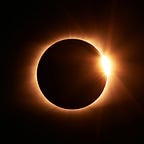SpaceX’s Starlink Satellites Fall Victim to Geomagnetic Storm
Human dependence on online connectivity increases significantly after 2020. As per the report there are 5.35 billion active internet user in 2024, i.e., almost 66.2% of the current world’s population.
As per this results the active internet users have grown by 1.8 percent over the past 12 months, with approximately 100 million new users coming online during this period of time. The active internet users have grown almost 1.5 times since pre COVID era. Although the number is significantly large, but its far beyond to reach Universal Connectivity, one major goal set by United Nations. As per this growth rate it is increasingly unlikely that we’ll reach UN’s goal of universal connectivity for sustainable future by 2030.
How Starlink can be a help?
I plummeted all these statistics not to bore you, but rather to provide you with the preface of our current internet userbase, how far we are from the target (set by us, humans….), and how Starlink satellites can be of great help. SpaceX’s Starlink mission revolves around the idea to provide high-speed, low-latency internet access to people around the world, especially in remote locations and areas without access to high-speed internet. Starlink is a satellite constellation deployed in the low Earth orbit to deliver broadband internet that can all possible internet facilities such as support streaming, online gaming, video calls, and more. So, it is inevitable SpaceX provides an edge with wireless communication links to places (e.g., polar regions, disaster relief services) that are difficult to connect via wire.
To date, SpaceX has 5,438 Starlink satellites in orbit that are operational, out of 5,828 launched. As per Jonathan McDowell the oldest satellite, launched in 2019 and 2020, is still in orbit serving mankind.
SpaceX satellites are low-Earth orbit (LEO) satellites; LEO — where most of the communication satellite orbits. LEO satellites, below 2000 kilometers altitude, typically feel lots of air drag due to lower altitudes. Air drag is a significant force that affects LEO spacecrafts’ telemetry. Sometimes, air drag even leads to a significant impact on the spacecraft's trajectory, leading to falling it out of orbit and causing fatality. Something similar happened to approximately 40 Starlink satellites on 3 February 2022.
SpaceX officials twitted: ‘SpaceX launched 49 Starlink satellites on Feb. 3, but “up to 40 of the satellites” will be lost due to a geomagnetic storm.’
How did this happen?
SpaceX launched 49 satellites using a Falcon 9 rocket on Feb. 3, 2022. The mission was able to successfully deploy the batch of satellites in orbit, however, a disaster struck the next day. The figure below shows that NOAA/SWPC warned about a solar storm (CME) and maintained a moderate to minor ‘geomagnetic storm’ watch during that period.
To get a more detailed understanding on solar storm, CME, and magnetic storm please check the associated medium links. You can also get a detailed description how magnetic storm can impact satellites and other electrical systems in this article.
From Physics-101, we all know if you heat any gas (or liquid and solid for that matter) it ‘expands’. During solar storm ‘the sun shoots off magnets’. The Earth’s magnetic shield deviate that energy, but sometimes it dumps the solar storm’s energy into our planet’s upper atmosphere. Magnetic storm comes with large amount of energetic particles and energies that can heat up Earth’s upper atmosphere, causing it to ‘inflate’, ‘expand’, and become ‘denser’. This phenomena also gives rise of ‘Aurora’. This whole phenomena happen at an altitude where LEO-satellites orbits. The denser atmosphere create larger atmospheric drag and make satellites deorbit, specifically that are orbiting LEO.
SpaceX mentioned that “the escalation speed and severity of the storm caused atmospheric drag to increase”. They later disclosed that the air drag was as much as 50% more than the satellites typically experienced in a LEO. Once they understand the issue, SpaceX’s operations team put the satellites into a fail-safe mode that orbits the spacecraft onto its edge to reduce drag — typically referred to as ‘shark-fin’ orientation. Tzu-Wei Fang, a NOAA scientist used numerical models to estimate how grave the situation was and she found it was almost 50%-125% more denser atmosphere near LEO after the magnetic storm. One noteworthy point is SpaceX never mentioned whether they were aware of of the storm or the watch on NOAA’s website — my own personal opinion, they should have; or if they did, shouldn’t have overlooked it.
What does it mean for SpaceX or ‘Other LEO’ satellites?
Erika Palmerio, scientist at Predictive Science, and NOAA specialist mentioned that on average we can expect 1,700 minor solar storms over the course of an 11-year-long solar cycle. Let’s digest the fact, its 11-years (4015-days) a solar cycle and it is expected to observe 1,700 minor solar storms (not even moderate or strong events that can lead to severe damages). So, it is expected to see a minor storm in every 3-days. But don’t worry not all the storms are going to hit the Earth, and not all the storms are going to produce similar impact on satellites. However, the limitation of our knowledge and prediction models is that we are unaware of when a large solar storm going to hit the Earth.
What does it mean for us as humans?
Our reliance of satellites increasing day-by-day, and we are unaware of the fact how much a large solar storm may cost us!
